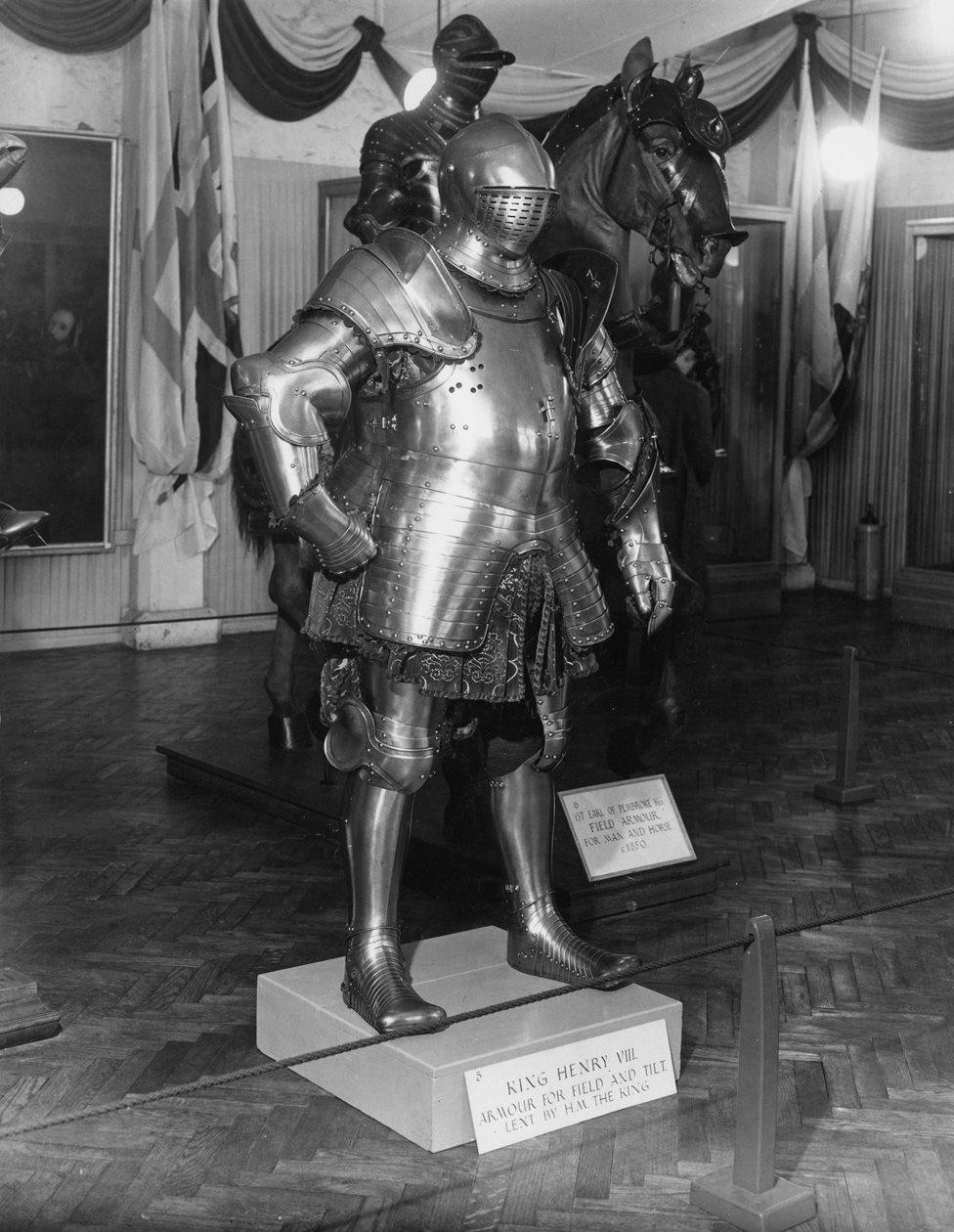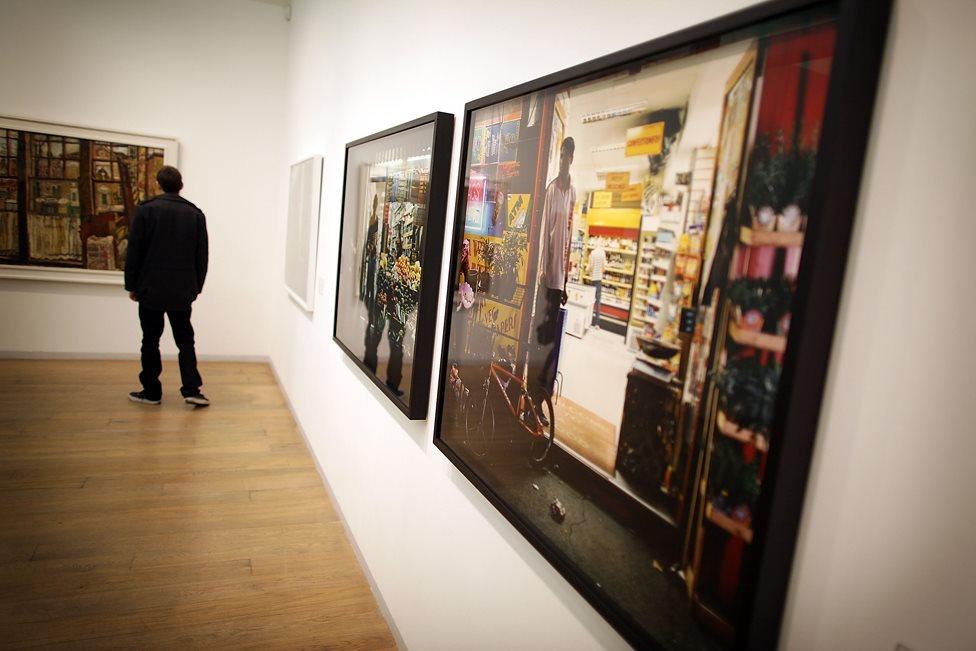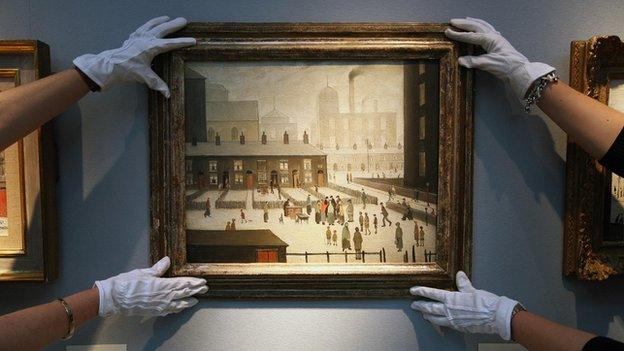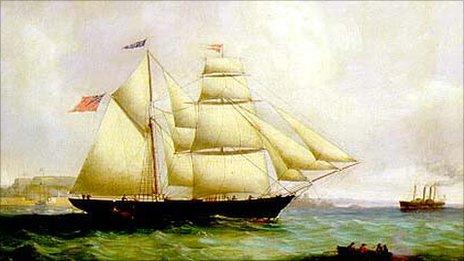Britain has a 'hidden' art collection worth £3.5bn
- Published

The Government Art Collection includes one of Andy Warhol's portraits of the Queen, which hangs in the British embassy in Washington
The government and local authorities own art worth at least £3.5 billion, but only a tiny fraction is on display, research from a pressure group claims.
Just 3% of the collection is available for the public to view, said the Taxpayers' Alliance, external.
Its freedom of information requests showed that one local council - Carlisle, in Cumbria - displayed just 0.02% of the 864,100 works it owned.
The alliance called on the government to improve the number of works on show.
It acknowledged that selling off items, many of which were bequeathed specifically to be put on public display, could be "inappropriate", but suggested councils could consider loaning artwork to schools and community centres.
"No one is proposing a wholesale sell-off of art owned by the government but, nonetheless, the scale of the collection is staggering," said Jonathan Isaby, chief executive of the alliance.
"Public bodies and local authorities should make an effort to display more of their art for people to enjoy, and they also need to take a good, hard look at their art portfolio and think about what does and does not need to be retained."

Henry VIII's armour, worth £53.6 million, seen on display at the Tower of London
The most valuable item owned by the state is Henry VIII's armour for field and tournament, external, which was acquired by the Royal Armouries in 1649 and is now estimated to be worth £53.6 million.
A painting by LS Lowry, called Lancashire Fair: Good Friday, Daisy Nook, is the most expensive item in the collection not owned by a gallery.
Bought in 1947 for just £120, it is now worth an estimated £3.5 million. It currently hangs in the Department for Culture, Media and Sport - but has been loaned to several institutions, including Tate Britain, the Ulster Museum and The Lowry, over the last five years.
It is also available to see on the BBC's Your Paintings site, which aims to catalogue every oil painting in the UK national collection.

Analysis - Will Gompertz, BBC Arts Editor
The suggestion here is that a valuable asset owned by the taxpayer is being mismanaged: If these artworks and artefacts are not being made available for the public to see, then sell them and put the money into the public coffers.
But that overlooks one of the purposes for which people and authorities buy art, and that is PR or soft power. Go to almost any ambassador's official residence and you will see great examples of art from his or her home country. Their job is not to be merely decorative, but to communicate the values, status and culture of a country. It brings a certain credibility, authority and a confident swagger to proceedings. It is working hard for its place on the wall.
That said, there is far, far too much art that is owned by authorities and museums that is merely gathering dust in storerooms across the country, which really ought to be made available to the public. There's many a school wall, for instance, that would benefit from a high quality art work. It would bring hidden benefits, just as the oil painting in the ambassador's residence does.

Amongst local councils, Manchester City Council owns the most valuable collection - of 46,347 pieces, worth some £347 million. Of those, 1,017 (2.1%) are on display.
North Hertfordshire council did not reveal how many pieces it owned, but it has the largest collection of any local authority, with "over a million pieces".

Hundreds of items from the Government Art Collection were put on display at the Whitechapel Gallery in 2010 and 2011
The Taxpayers' Alliance also noted that, since austerity measures came into place, the government had continued to buy pieces for the national collection.
Between 2010 and 2015, the state bought art worth £361,320, including a £40,000 sculpture by the contemporary Brtitish artist Mel Brimfield, and a £22,500 work by Jim Lamble.
"At a time when we are making necessary savings, it is only reasonable to ask whether some of the recent purchases represent value for taxpayers' money," said Mr Isaby.
A spokesman from the Department for Culture, Media and Sport said the suggestion that only 3% of publicly-owned works were on display "does not apply to the Government Art Collection, which has 58.3% of its artwork currently on display in British government buildings in the UK and around the world".
"The works of art are seen by thousands of visitors including heads of state, public figures and the general public."
The Government Art Collection was founded in 1898 to promote British art and culture to the world and includes more than 13,000 items, dating from the 16th Century to the present day.
It includes works by, among others, John Constable, William Hogarth and Lucian Freud. Hundreds of them were displayed at the Whitechapel Gallery in London in 2010 and 2011; and members of the public can tour the collection by appointment.
- Published30 June 2013

- Published27 June 2011

- Published3 December 2010
- Published16 December 2011